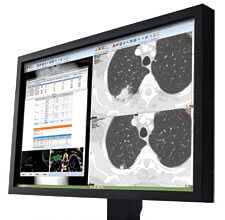 I’ve been looking at hospital supply chain automation and the IT surrounding it for a number of years now. Starting with Cardinal Health but then moving on to help a number of other vendors in the space, I’ve felt that there’s not been enough next-generation tech being applied to the low margin, high volume business of hospital supply management.
I’ve been looking at hospital supply chain automation and the IT surrounding it for a number of years now. Starting with Cardinal Health but then moving on to help a number of other vendors in the space, I’ve felt that there’s not been enough next-generation tech being applied to the low margin, high volume business of hospital supply management.
 I’ve been looking at hospital supply chain automation and the IT surrounding it for a number of years now. Starting with Cardinal Health but then moving on to help a number of other vendors in the space, I’ve felt that there’s not been enough next-generation tech being applied to the low margin, high volume business of hospital supply management. Hospitals often spend tens of millions of dollars on EHRs and other IT systems that have little direct cost reduction capability but they ignore, often at their peril, supply management systems that can save immediate dollars.
I’ve been looking at hospital supply chain automation and the IT surrounding it for a number of years now. Starting with Cardinal Health but then moving on to help a number of other vendors in the space, I’ve felt that there’s not been enough next-generation tech being applied to the low margin, high volume business of hospital supply management. Hospitals often spend tens of millions of dollars on EHRs and other IT systems that have little direct cost reduction capability but they ignore, often at their peril, supply management systems that can save immediate dollars.
There seems to be a light at the end of the tunnel, though. Earlier this year I joined the board of Hybrent, led by founder and supply chain expert Harold Richards, because I instantly saw the value of what they were doing. While Hybrent is a startup funded by a couple of friends that I know have been successful in the past, I joined primarily because of Harold’s 21 years testing, applying, measuring and implementing supply chain strategies that have driven well over $50 million in costs out of the supply chain units where he’s served. While supply chain automation is often seen as an administrative activity, I’ve seen first hand that it’s actually directly tied to increase in patient & nursing satisfaction. I asked Harold to tell us a little about why supply chain automation is so important and here’s what he had to say:
Does Your Hospital Supply Chain Have Traits Of An Ant Farm?
You may have had an ant farm as a child and marveled at the cooperative efforts and precision of the ants as they went about their daily activities. Thanks to the panes of glass, you could see into the inner workings of the ant society at all levels and depths.
That same level of effort went into the anthill in the backyard – maybe even more due to the lack of protection. Yet it went unnoticed because it was underground. You only noticed problems when they affected ants that you could see at the top of the anthill.
So it is with the hospital supply chain, full of hard working individuals who run into daily challenges just as ants do. Both rely on excellent systems of communication to get things accomplished. However, ants do not have to deal with bureaucracy, integrating of mismatched systems, missing supplies and other time-wasting system failures (at least not as far as we can tell).
Front-line healthcare workers do spend precious time dealing with these problems, resulting in inefficiencies, higher costs, and potential poor patient outcomes. Spending 20% of your nurses’ time on supply scavenger hunts does not help anyone – certainly not the nurses.
Not only does this cause inefficient use of time, it causes inventory chaos – incorrect counts, hoarding supplies, missing orders and the like – that can snowball throughout your supply chain system. You have stressed and unhappy ants, so to speak.
These misfires cause turmoil within the ant farm and can lead to accidents like sentinel events. Looking at the bigger picture within healthcare, we are expected to do more with less. In my opinion this is a recipe for disaster.
Today, droves of patients are flocking to the ER’s like never before seeking treatment. As a result, emergency rooms all over the country are filled beyond capacity levels with less staff, more workload and higher expectations. According to USA TODAY, some hospitals are seeing 12% spikes. Purely from a metrics perspective this may not seem like much, but could result to patients dying while waiting for care.
With this increase in volume there now becomes a higher risk and demand for medical supplies & enhancement in supply chain efficiencies. The reality we live in is this; incorporating anything less than the traits of an ant farm will cause major mishaps in form of patients dying. It’s a sentinel event just waiting to happen.
Just imagine something as minor as clinical caregivers not having instant access to trauma, respiratory, and EMS supplies within a already busy emergency department while a patient is being triaged with chest pains. Quite a frightening forecast when you think about it. As they say, future behavior is predicated upon past behavior. The future outcomes of your patients weigh heavily on your actions.
As a hospital executive, your view may be that of the backyard anthill – you have surface information that gives you superficial knowledge, but without the overall view you need to fully anticipate or fix problems. Meanwhile, your care providers may be dealing with supply chain systems that hamper effective communication instead of enhancing it.
If you’re not doing these three things your patients are at risk and your hospital is losing millions of dollars in supply chain management:
- You must setup a transparent assignable communication system for the front-line staff – A system allowing your “ants” to effectively communicate. With rules and filters that you define, user-friendly menus simplify the ordering process for your nurses and give real–time feedback that propagates through your system via real-time push-notifications and alerts. It’s imperative that everyone from nurses to supply chain personnel to trading partners works off the same set of information.
- Compiles data, giving you and your staff immediate access to as much data as you need, based on your preferred settings. This gives you the “panes of glass,” if you will, to see into the complex workings of your system at any point in time. It’s equally important to have this data embedded within daily workflows to effectively make better business decisions.
- Be accountable for setting up the rules and analytics that are important to your organization. Sense the need of urgency to prevent as well as fix problems. You can either process the output of the visibility system through a separate analytical engine to get the insight you need, or integrate the two along with any other useful support system.
The key is to get you the information and facts you need to make decisions when you need it, and not to overwhelm yourself with frivolous or useless information. If you can’t see the overall picture, and can’t interpret it, you can’t fix it. That is true at both the executive and care-provider level. Do you really know what’s going on in your “anthill” today?
Ants are models of efficiency, and with a proper Supply Chain Visibility System, your front-line care providers will be as well. They will be thrilled with the ability to streamline their time and prevent supply chain snafus. They will probably forgive you for any ant analogies you want to draw – although you’ll have to gauge that for yourself.
hospital / shutterstock










